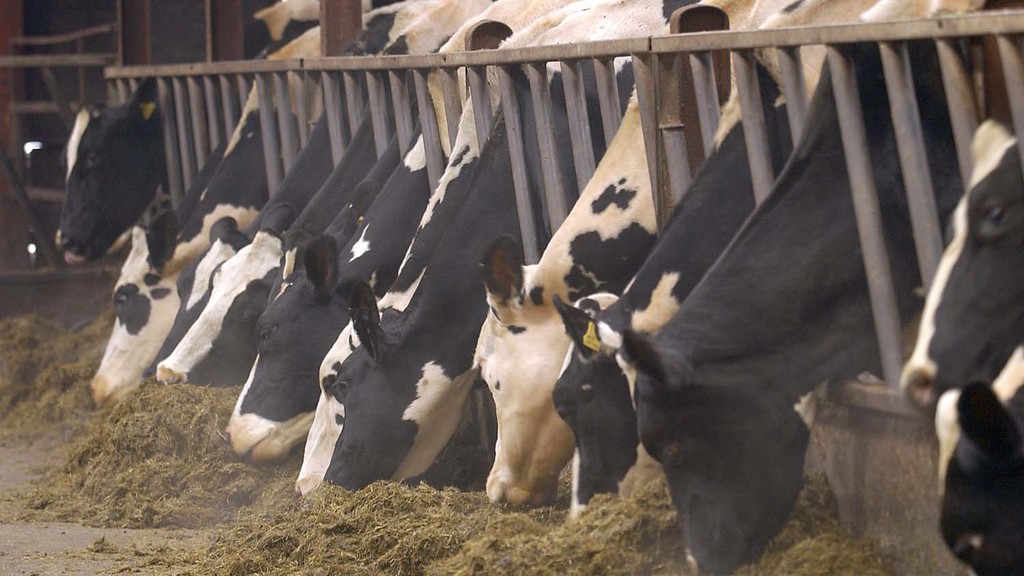As thoughts turn towards feeding strategies for the winter, most farmers will be reflective on what has been a very difficult grazing season. According to Teagasc’s PastureBase, average growth rates to September are some 800kg DM/ha behind 2023 figures and up to 1200kg DM/ha behind the five-year average. The reality of these figures will be felt on many farms, with tough decisions required on the need to purchase additional winter feed or reduce stock numbers.
Before any decisions are taken, knowledge of both forage quality and quantity in clamps and bales will be a necessity. Having this information, will allow for calculations to occur on feed usage, and enable farmers to make an informed assessment on either purchasing feeds or reducing stock numbers. Prioritising the highest quality dry matter digestibility (DMD) silage on farm for freshly calved cows and young stock is paramount. Autumn calving dairy cows will require silage of 75+ (DMD), with spring calving cows needing forage of 74 (DMD) and young growing stock requiring 72 (DMD) silage. Where possible, if poorer quality forage is on farm, this should be segregated for cows in the dry period, thus, allowing for quality forage to be allocated to younger stock or remain for the spring calving period. As a rule of thumb, the following per day dry matter intake (DMI) guidelines apply.
|
Forage Intake Guideline |
KG DM/DAY |
|
Suckler Cows |
|
|
Dry |
8-9 kg/DM |
|
Calved |
10-12 kg/DM |
|
Dairy Cows |
|
|
Dry |
10-12 kg/DM |
|
Milking |
12-14 kg/DM |
|
Young Growing Stock |
|
|
Weanlings |
4.5-6 kg/DM |
|
Cattle (18-20 months) |
7-9 kg/DM |
For dry cow’s, their nutritional plain will be determined by the body condition score (BCS) they enter the dry period in. Where forage reserves are tight, savings are achievable with this group of animals, especially with those of a higher (BCS). To extend reserves, a large proportion of these dry cow diets can incorporate hay/straw, and a molasses based liquid feed. Supplementing high fibre dry cow diets with molasses blends will not only improve intakes and dietary energy levels, but also help in reducing overall diet sorting. Additionally, incorporating molasses into the diet will also support rumen microbial growth, particularly of fibre digesting bacteria. Targeting a (BCS) of 3.0-3.25 for dairy and 2.5-3.0 for beef cows should be the aim at calving down next spring.
Counted as the future income and profitability of the farming enterprise, young growing stock need to be prioritsed when allocating quality forage and feed on farms this winter. Diets for these stock groups should be formulated to provide a crude protein (CP) content of 13-14% and an energy value of 0.85-0.9 UFL. Average daily gains (ADG) of 0.4-0.6kg and 0.5-0.7kg respectively should be targeted for weanlings and stores. Where purchasing straights or compound feeds is necessary to supplement poorer quality or restricted forage, it’s important to only choose high-quality ingredients. Molasses is one of these ingredients, and incorporating a high sugar high protein molasses blend into young stock diets will go far beyond just increasing dietary energy and protein levels. As a source of readily fermentable energy, molasses blends will significantly boost the rumen microflora, while their crude protein content, will provide an excellent source of fermentable protein for microbial synthesis, thus, enabling for optimum rumen function to occur. Furthermore, the additional protein, will help reduce the requirements for other protein sources, while the blends palatability will ensure maximum feed intakes are achieved.
Finishing diets can also be an area where savings on forage can be made by including molasses blends and straights. Moving stock to an ad-lib diet, can greatly reduce the requirement for forage, once correct feed management is in place. In general, finishing animals will consume 2.0-2.2% of their bodyweight in feed per day. To avoid digestive upsets, 10-15% of this should be fibre based in the form of straw, hay, grass/maize silage or whole crop. Finishing diets should be formulated for energy as opposed to protein requirements and contain a minimum value of 0.92 UFV/kg. A simple 3-4 way mix including high energy feeds like barley, wheat and molasses, a protein and a fibre source should be sufficient. The addition of a sugar source to ad-lib high starch diets will aid in balancing the energy sources and allow for higher feed utilisation and an optimised rumen environment. An introductory period of at least three weeks should be undertaken when moving animals onto ad-lib feeding.
The benefits of including molasses blends in diets of all the above animal classes are numerous. From improving the overall diets energy density, protein content and palatability to uniformly carrying minerals throughout the TMR, molasses is the versatile feed in a winter of tight forage supplies.


